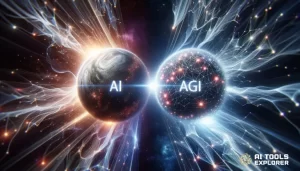The application of Artificial Intelligence (AI) across various industries has grown exponentially, and climate prediction is a prime example. AI technology empowers meteorologists to generate more accurate weather forecasts and deliver advanced warnings for extreme weather conditions, including cold waves, heatwaves, droughts, and storms.
AI’s Capacity for Processing Massive Data Sets
One of the most significant advantages of using AI in climate prediction is its ability to swiftly and accurately process enormous amounts of data. Weather forecasting necessitates the analysis of vast data from multiple sources, such as satellite images, radar, and ground-based sensors. AI algorithms can process this information in real-time, identifying patterns and anticipating changes in weather conditions.
Cold Wave Prediction
By analyzing historical data, AI algorithms can recognize patterns and predict the occurrence of cold waves. This information is invaluable for farmers who need to protect their crops from freezing temperatures and local authorities who must prepare roads and infrastructure for potential snow and ice.
Heatwave Forecasting
AI can also predict heatwaves, which can have disastrous consequences for public health. By analyzing data from weather stations and other sources, AI algorithms can forecast when temperatures are likely to soar and provide early warnings to authorities. This allows them to take appropriate actions, such as opening cooling centers or offering support to vulnerable populations.
Drought Prediction
Droughts are another significant climate concern that AI technology can help predict. By examining historical data on rainfall and soil moisture, AI algorithms can enable farmers to plan their planting schedules and irrigation systems more efficiently. This can help minimize the impact of drought on crop yields and food security.
Storm Prediction
AI can also help predict storms, such as hurricanes and tornadoes, which can inflict extensive damage on communities. By analyzing data from weather satellites and ground-based sensors, AI algorithms can anticipate the path and intensity of these storms, enabling authorities to issue timely warnings and evacuate people from affected areas.
Revolutionizing Extreme Weather Preparedness with AI
The use of AI in climate prediction has the potential to fundamentally change how we prepare for and respond to extreme weather conditions. By offering more accurate and timely forecasts, AI can help reduce the impact of climate-related disasters and save lives.
The Role of AI in Climate Change Mitigation
As we continue to grapple with the effects of climate change, AI will undoubtedly play an increasingly crucial role in mitigating its impact on our lives and our planet. By improving climate prediction and weather forecasting, AI can help us better adapt to the changing environment, inform the development of resilient infrastructure, and optimize resource allocation during extreme weather events.
Collaborative Efforts
Researchers, meteorologists, and policymakers need to collaborate in order to harness AI’s full potential in climate prediction. This includes the development of advanced algorithms, the integration of diverse data sources, and the promotion of open data
sharing initiatives. As these collaborative efforts continue to grow, we can expect to see significant advancements in AI-driven climate prediction and preparedness.
Machine Learning and Deep Learning in Climate Prediction
The incorporation of machine learning and deep learning techniques has been instrumental in enhancing the accuracy and efficiency of AI-driven climate prediction. These technologies enable AI models to “learn” from vast amounts of data and continuously improve their predictive capabilities.
Machine learning techniques, such as supervised and unsupervised learning, allow AI models to identify patterns and relationships in the data that might not be apparent to human analysts. Deep learning, which relies on artificial neural networks, takes this process a step further by simulating the structure and function of the human brain, allowing AI models to process complex data and make more accurate predictions.
Public and Private Sector Involvement
Both the public and private sectors play a crucial role in the development and application of AI-driven climate prediction technologies. Government agencies, such as the National Oceanic and Atmospheric Administration (NOAA) and the European Centre for Medium-Range Weather Forecasts (ECMWF), invest in research and development to improve weather forecasting capabilities. Meanwhile, private companies, including IBM and Google, are also heavily involved in developing and implementing AI solutions for climate prediction.
These collaborative efforts between the public and private sectors are essential for driving innovation in AI-driven climate prediction, ensuring that the technology continues to evolve and deliver more accurate and actionable insights.
Challenges and Future Directions
Despite the tremendous progress in AI-driven climate prediction, several challenges remain:
- Data Quality and Availability: Accurate climate prediction relies
- on high-quality, comprehensive data sets. In some regions, there may be limited access to reliable weather data, which can impact the accuracy of AI-driven predictions.
- Computational Power: Processing massive amounts of data for climate prediction requires significant computational resources. While advancements in cloud computing and specialized hardware have made it more accessible, there is still a need for further improvements in this area.
- Model Uncertainty: AI-driven climate prediction models can be sensitive to uncertainties in the data and the underlying assumptions used to develop the models. Improving the accuracy and robustness of these models is an ongoing area of research.
- Ethical Considerations: The use of AI in climate prediction raises ethical concerns, such as ensuring equitable access to AI-driven forecasting tools and addressing potential biases in the data and algorithms.
As research continues to address these challenges, we can expect further advancements in AI-driven climate prediction, leading to more accurate and timely forecasts that empower individuals, communities, and governments to better prepare for and respond to extreme weather conditions.
Conclusion
AI technology is revolutionizing the field of climate prediction, offering the potential to significantly improve our ability to forecast and prepare for extreme weather events. By leveraging AI’s capacity to process massive data sets, predict cold waves, heatwaves, droughts, and storms, we can fundamentally change the way we approach extreme weather preparedness and climate change mitigation.
Collaborative efforts between researchers,
meteorologists, policymakers, and both public and private sector organizations are essential for harnessing the full potential of AI in climate prediction. These collaborations will drive innovation, improve the accuracy and efficiency of AI-driven forecasting models, and promote the sharing of data and resources.
As we continue to face the challenges of climate change and the increasing frequency and severity of extreme weather events, AI-driven climate prediction technologies will play a critical role in helping us adapt and build more resilient communities. By investing in research and development, fostering collaborative partnerships, and addressing the challenges and ethical considerations associated with AI in climate prediction, we can unlock the transformative potential of AI technology and better prepare for the uncertain future that lies ahead.








